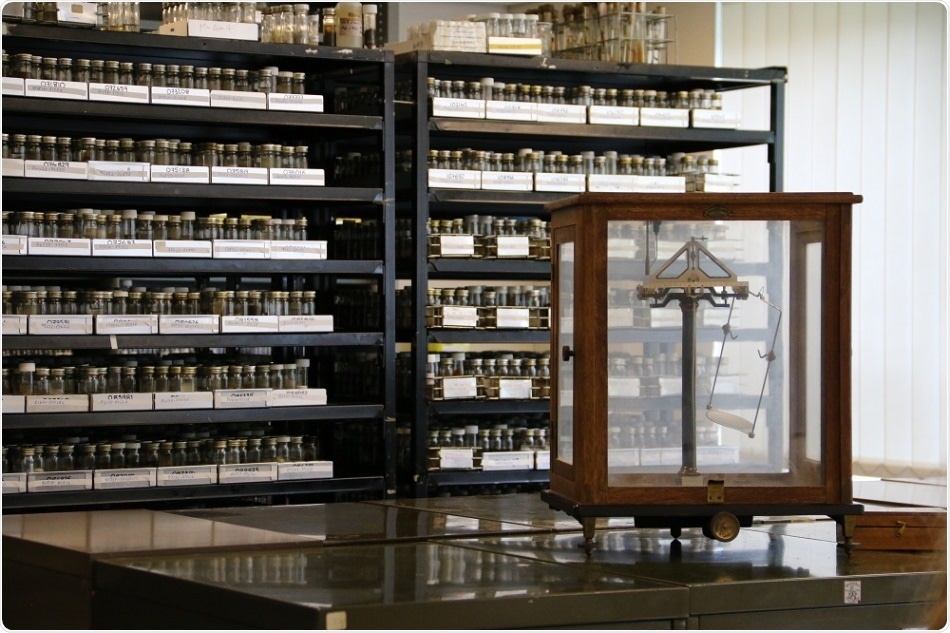A team of scientists, led by CABI’s Dr Matthew Ryan, have outlined a series of challenges and opportunities presented in a necessary review of how microbiomes – biological communities including bacteria, archaea, fungi, algae, protists and viruses – can be ‘banked’ and preserved for generations to come.

Part of the culture collection at CABI’s laboratories in Egham, UK (Credit: Tom Swindley, CABI).
The researchers, who call for a prioritized list of what should be conserved from a scientific, economic, social and environmental perspective, present their views in the journal Trends in Microbiology and also suggest that the current biobanking infrastructure is ‘fragmented and not prepared for the biobanking of microbiomes.’
The microbiome research field is rapidly evolving, but the required biobanking infrastructure is currently fragmented and not prepared for the biobanking of microbiomes. The rapid advancement of technologies requires an urgent assessment of how biobanks can underpin research by preserving microbiome samples and their functional potential.”
Dr Ryan, Curator of CABI’s Genetic Resource Collection, a type of biobank
Biobanks conserve biological samples that traditionally are maintained as single organism or sterile cultures. They are essential for the research community to ensure high-quality research, and are like a failsafe for how research output is used in real world applications, e.g. to guide public health policies or develop products.
The researchers, working after an assessment of resource infrastructure needs carried out by the EU project MicrobiomeSupport, argue that microbiome science ‘signals a paradigm shift in the scientific approach from preservation of microbe-free samples in culture collections (e.g. seed samples) towards preservation of complex communities, which requires the supporting infrastructure to be developed.’
Dr Ryan added, “The challenges of preserving microbiome samples optimally are immense. Researchers should be aware of unintentionally and fundamentally altering the functionality and integrity of the microbiome, which is a dynamic system that change in response to environmental influences and biotic factors.”
“At the functional level, the removal of a single critical microbial component due to the application of a non-optimized storage approach could irreversibly affect the integrity of the system.”
Co-author and EU Project Coordinator Dr Angela Sessitsch, from the AIT Austrian Institute of Technology, said there are two essential questions that need to be answered when considering microbiome preservation – what should be preserved and what is the best way of preserving it?
“The question about what to preserve is a controversial one, and ultimately serves not only to underpin research quality and the generation of new microbiome-sourced microbial products (which may also have commercial value) but also to allow for preservation during time of altered agricultural and medical practices and climate change”, she said. “Similarly, there is a need to ensure that products such as probiotics remain stable over time.”
In outlining a range of existing facilities for the preservation of microbiomes – including the Microbiota Vault, which represents the first major step towards a comprehensive microbiome resource – the scientists also suggest that of the all techniques cryopreservation has been the ‘gold standard’ for microbial storage since the 1960s.
The establishment of solid infrastructures for microbiome research, including biobanks, is essential, both for scientists and to maintain trust in science by citizens, particularly within a topic which receives so much hype as the microbiome. Biobanks are a way to guarantee better application of research results within the public sphere and a way for scientists to have their work verified independently, should the need arise. They may also be crucial for biodiversity preservation; hence, the need and urgency for them is certainly there’’.
Dr Bettina Schelkle, Co-author from the European Food Information Council in Brussels, Belgium
Dr Ryan concluded by suggesting that the biggest ‘technological bottleneck’ is the development of optimized methodologies for the preservation of microbiomes and for the assessment of preservations’ success in terms of maintaining the composition and functionality of microbiomes.
Dr Ryan said, “The clear complementarity between culture collections and biobanks necessitates an approach to enable that both work together to ensure that this critical microbiome research field has effective support. This will require the identification of infrastructural overlaps to gauge what is required and what is available/missing within the EU and beyond.”
Source:
Journal reference:
Ryan, M.J., et al. (2020) Development of microbiome biobanks – Challenges and Opportunities. Trends in Microbiology. doi.org/10.1016/j.tim.2020.06.009